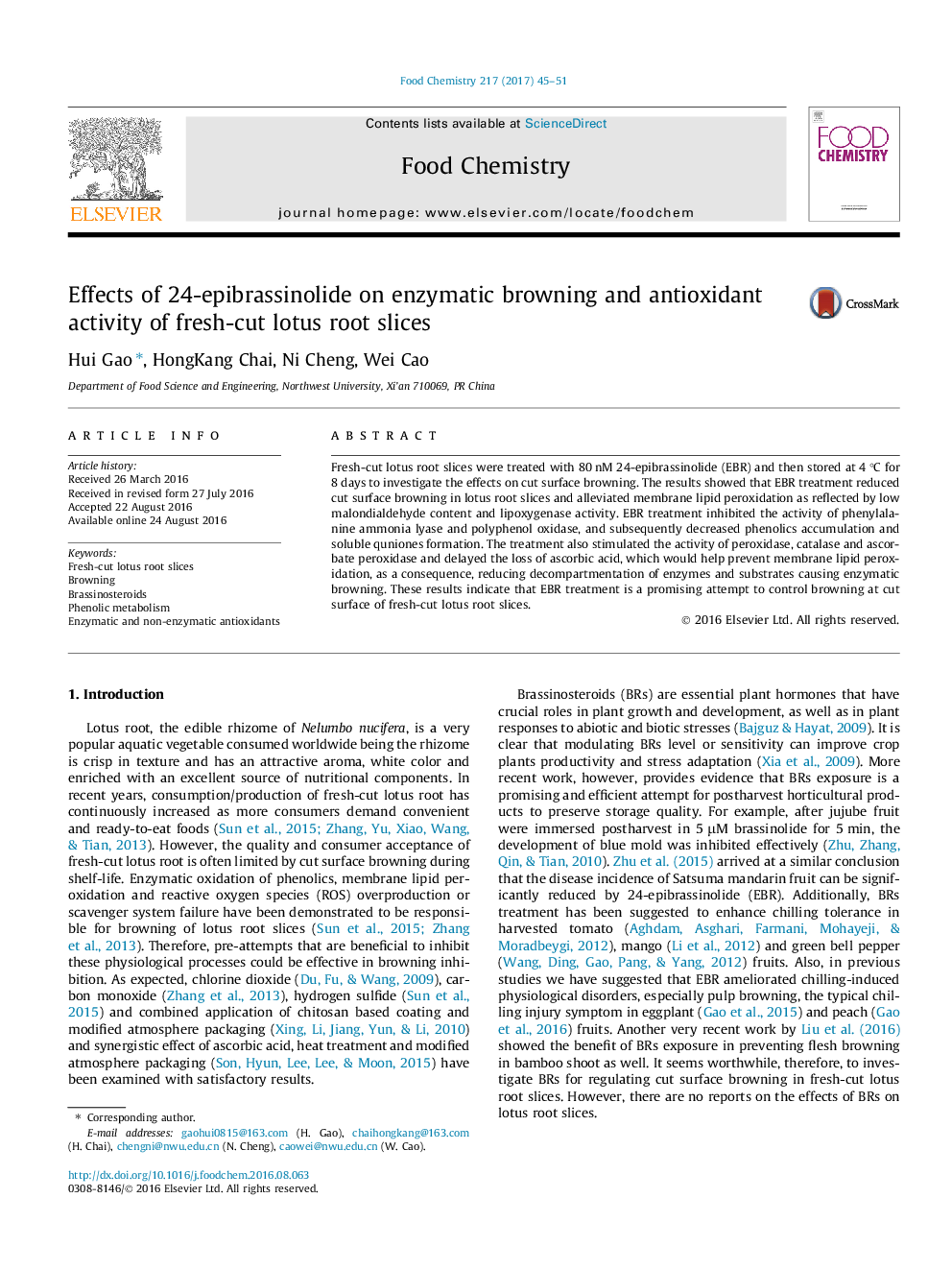| Article ID | Journal | Published Year | Pages | File Type |
|---|---|---|---|---|
| 1184732 | Food Chemistry | 2017 | 7 Pages |
•24-Epibrassinolide (EBR) reduced browning on the cut surface of lotus root slices.•EBR alleviated membrane lipid peroxidation and inhibited PAL and PPO activity.•EBR induced POD, CAT and APX activity and suppressed ascorbic acid loss.
Fresh-cut lotus root slices were treated with 80 nM 24-epibrassinolide (EBR) and then stored at 4 °C for 8 days to investigate the effects on cut surface browning. The results showed that EBR treatment reduced cut surface browning in lotus root slices and alleviated membrane lipid peroxidation as reflected by low malondialdehyde content and lipoxygenase activity. EBR treatment inhibited the activity of phenylalanine ammonia lyase and polyphenol oxidase, and subsequently decreased phenolics accumulation and soluble quniones formation. The treatment also stimulated the activity of peroxidase, catalase and ascorbate peroxidase and delayed the loss of ascorbic acid, which would help prevent membrane lipid peroxidation, as a consequence, reducing decompartmentation of enzymes and substrates causing enzymatic browning. These results indicate that EBR treatment is a promising attempt to control browning at cut surface of fresh-cut lotus root slices.
